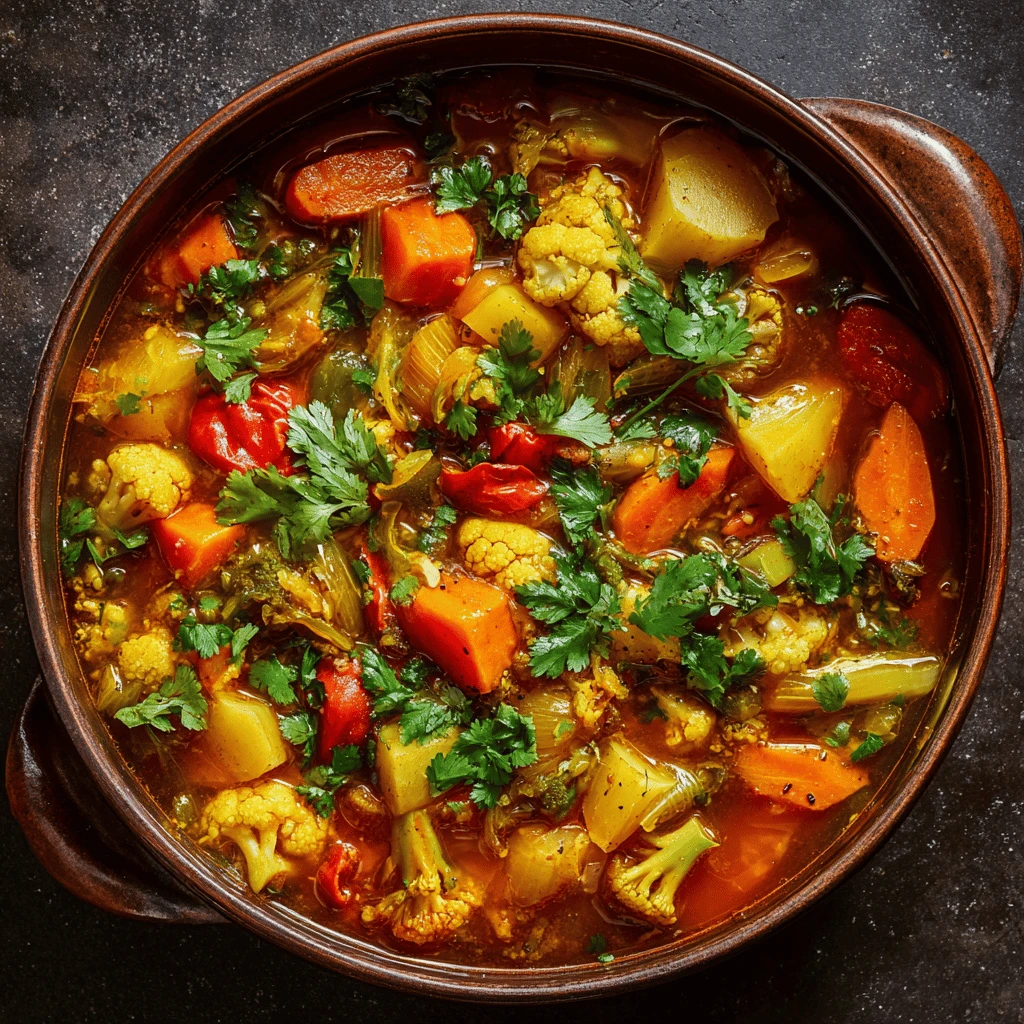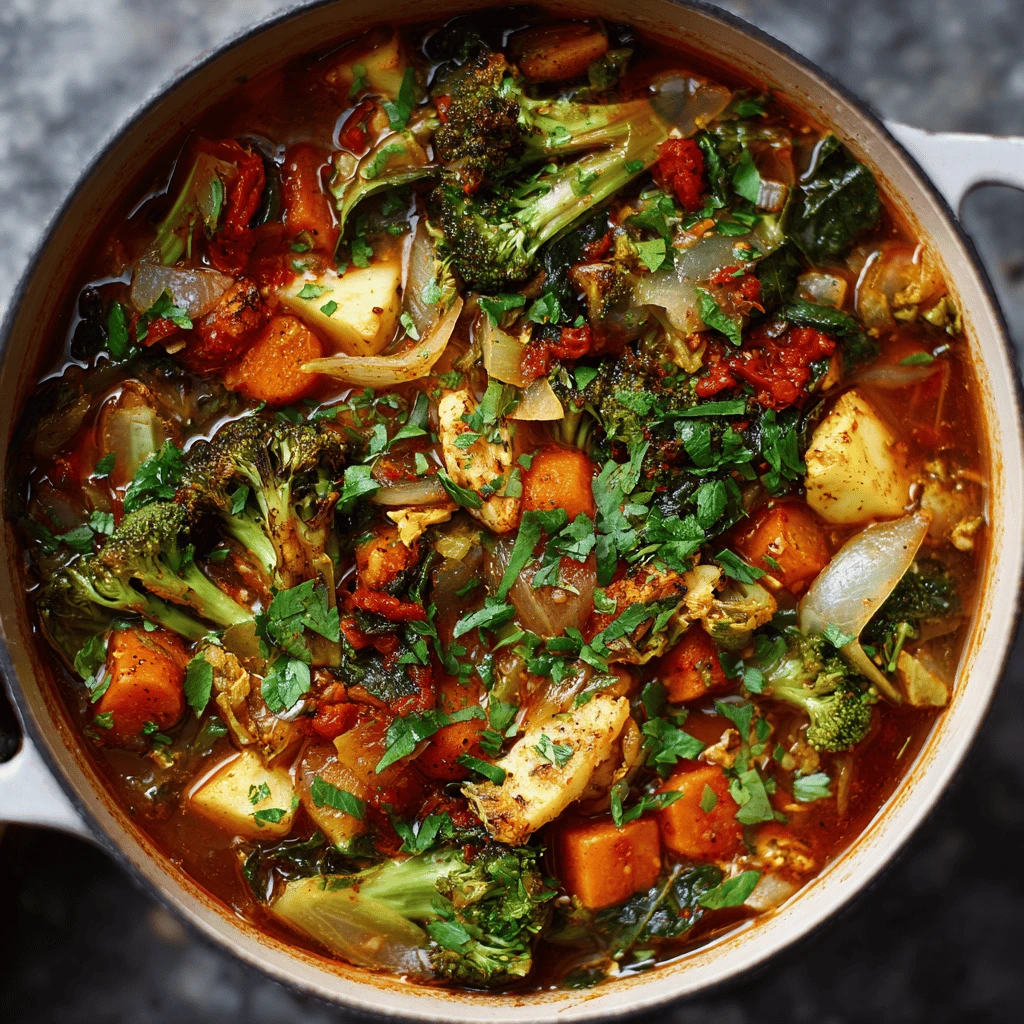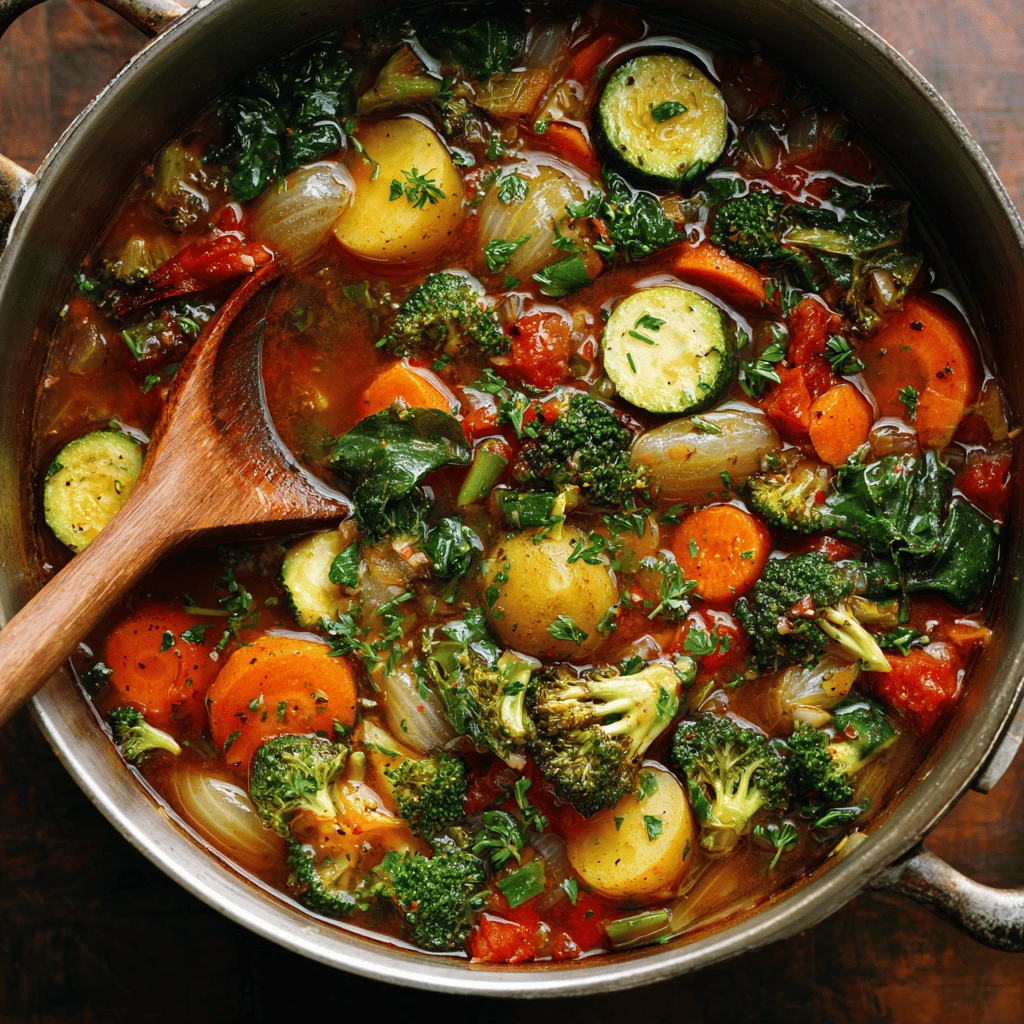One-Pot Vegetable Stew: A Hearty & Healthy Guide
Introduction: Embrace the Simplicity of One-Pot Cooking
In today’s fast-paced world, finding the time and energy to prepare a nutritious and delicious meal can be a challenge. Enter the one-pot vegetable stew – a culinary masterpiece that embodies both simplicity and flavor. This comforting dish requires minimal cleanup, utilizes readily available ingredients, and is incredibly versatile, allowing you to adapt it to your personal preferences and dietary needs. Whether you’re a seasoned cook or a kitchen novice, a one-pot vegetable stew is a fantastic way to enjoy a healthy and satisfying meal without spending hours in the kitchen. This guide will walk you through everything you need to know to create the perfect one-pot vegetable stew, from choosing your ingredients to mastering the cooking process.
Choosing Your Vegetables: A Rainbow of Flavors & Nutrients
The beauty of a one-pot vegetable stew lies in its adaptability. You can use virtually any vegetable you enjoy, making it a great way to use up leftover produce or incorporate seasonal ingredients. However, some vegetables lend themselves particularly well to stewing, adding depth of flavor and satisfying texture.
Root Vegetables: These form the foundation of a hearty stew. Carrots, potatoes (red, Yukon gold, or russet), sweet potatoes, parsnips, and turnips all add sweetness and substance. They can withstand longer cooking times without becoming mushy.
Alliums: Onions, garlic, leeks, and shallots are essential for building a flavorful base. Sautéing them in the pot before adding the other vegetables releases their aromatic compounds, creating a rich and savory foundation.
Cruciferous Vegetables: Broccoli, cauliflower, Brussels sprouts, and cabbage add a distinct flavor and texture to the stew. Add them towards the end of cooking to prevent them from becoming overcooked.
Leafy Greens: Spinach, kale, chard, and collard greens can be added in the final minutes of cooking for a boost of vitamins and nutrients. They wilt down quickly and add a subtle earthy flavor.
Other Vegetables: Celery, bell peppers (any color), zucchini, and mushrooms can also be incorporated into your stew. Consider their cooking times when adding them to the pot – softer vegetables should be added later.
Tips for Vegetable Selection:
- Consider seasonality: Choose vegetables that are in season for the best flavor and value.
- Vary the colors: A variety of colorful vegetables not only makes the stew visually appealing but also ensures a wider range of nutrients.
- Cut vegetables into uniform sizes: This ensures even cooking.
Building Flavor: From Broth to Herbs & Spices
Beyond the vegetables themselves, the flavor of your one-pot stew hinges on the liquid base, herbs, and spices you use.
Broth: Vegetable broth is the most common choice, but you can also use chicken broth (if you’re not vegetarian), or even water with added bouillon cubes or vegetable stock concentrate. Using homemade broth will elevate the flavor even further.
Herbs: Fresh or dried herbs can add depth and complexity to your stew. Popular choices include thyme, rosemary, bay leaf, oregano, parsley, and sage. Add dried herbs early in the cooking process to allow their flavors to fully develop. Fresh herbs are best added towards the end of cooking to preserve their bright flavor.
Spices: Spices can add warmth, spice, or a touch of sweetness to your stew. Consider adding paprika (smoked or sweet), cumin, coriander, turmeric, chili powder, or even a pinch of red pepper flakes for a touch of heat.
Other Flavor Enhancers:
- Tomato paste: A tablespoon or two of tomato paste, sautéed with the onions and garlic, adds richness and depth of flavor.
- Worcestershire sauce (if not vegetarian): A dash of Worcestershire sauce can add a savory umami note.
- Lemon juice or vinegar: A squeeze of lemon juice or a splash of vinegar at the end of cooking can brighten the flavors and add a touch of acidity.
- Soy sauce or tamari: Adds umami and saltiness. Use sparingly.
Creating a Flavor Profile: Experiment with different combinations of herbs and spices to create a flavor profile that suits your tastes. A Mediterranean-inspired stew might include oregano, basil, and thyme, while a Southwestern-inspired stew could feature cumin, chili powder, and coriander.
The Cooking Process: Step-by-Step Guide
Making a one-pot vegetable stew is remarkably straightforward. Here’s a step-by-step guide to ensure success:
1. Prepare Your Vegetables: Wash and chop all your vegetables into bite-sized pieces. Remember to cut them into uniform sizes for even cooking.
2. Sauté the Aromatics: Heat a tablespoon or two of olive oil (or your preferred cooking oil) in a large pot or Dutch oven over medium heat. Add the onions, garlic, and any other alliums and sauté until softened and fragrant, about 5-7 minutes. Add tomato paste and cook for another minute.
3. Add the Root Vegetables: Add the root vegetables (carrots, potatoes, etc.) to the pot and cook for a few minutes, stirring occasionally. This helps them begin to soften and release their flavors.
4. Add the Broth and Spices: Pour in the vegetable broth (or other liquid base) and add your chosen herbs and spices. Bring the mixture to a boil, then reduce the heat to a simmer.
5. Simmer the Stew: Cover the pot and simmer for at least 30 minutes, or until the root vegetables are tender.
6. Add the Remaining Vegetables: Add the remaining vegetables, such as broccoli, cauliflower, or zucchini, depending on their cooking times. Continue to simmer until all the vegetables are tender.
7. Add Leafy Greens (if using): Stir in the leafy greens in the last few minutes of cooking. They will wilt down quickly.
8. Season and Serve: Season the stew with salt and pepper to taste. Add a squeeze of lemon juice or a splash of vinegar for brightness. Serve hot, garnished with fresh herbs, a dollop of yogurt (if desired), or a sprinkle of Parmesan cheese (if desired).
Tips for Success:
- Don’t overcrowd the pot: If you’re making a large batch, it’s better to use a larger pot to ensure that the vegetables cook evenly.
- Adjust the liquid: If the stew becomes too thick, add more broth. If it’s too thin, simmer uncovered for a few minutes to allow some of the liquid to evaporate.
- Taste and adjust: Taste the stew throughout the cooking process and adjust the seasonings as needed.
Variations & Serving Suggestions: Customize Your Stew
The beauty of one-pot vegetable stew is its versatility. Here are a few variations and serving suggestions to inspire you:
Add Protein:
- Beans: Add canned or cooked beans (such as chickpeas, kidney beans, or black beans) for a boost of protein and fiber.
- Lentils: Red or green lentils cook quickly and add a creamy texture to the stew.
- Tofu or Tempeh: Cubed tofu or tempeh can be added to the stew for a plant-based protein source. Brown them separately before adding to the stew for a firmer texture.
- Sausage or Chicken (if not vegetarian): Add cooked sausage or shredded chicken to the stew for a heartier meal.
Spice it Up:
- Curry: Add curry powder and coconut milk for a flavorful and aromatic curry stew.
- Mexican: Add black beans, corn, chili powder, and a can of diced tomatoes for a Mexican-inspired stew. Top with avocado, cilantro, and a dollop of sour cream (if desired).
Serving Suggestions:
- Serve with crusty bread: A slice of crusty bread is perfect for soaking up the delicious broth.
- Serve over rice or quinoa: Spoon the stew over cooked rice or quinoa for a complete meal.
- Top with a dollop of yogurt or sour cream: Adds creaminess and tang.
- Garnish with fresh herbs: Fresh herbs add a pop of color and flavor.
- Add a sprinkle of cheese: Parmesan cheese or other grated cheese adds a savory touch.
Make-Ahead & Storage:
- One-pot vegetable stew is a great make-ahead dish. It can be stored in the refrigerator for up to 3-4 days.
- It also freezes well. Allow the stew to cool completely before transferring it to freezer-safe containers. It can be frozen for up to 2-3 months. Thaw overnight in the refrigerator before reheating.
Frequently Asked Questions
Q: Can I use frozen vegetables in one-pot vegetable stew?
A: Yes, frozen vegetables work well in one-pot vegetable stew. Add them directly to the pot without thawing. Keep in mind that frozen vegetables may release more water, so you might need to adjust the amount of liquid accordingly.
Q: How do I prevent my vegetables from becoming mushy?
A: Avoid overcooking the vegetables. Add softer vegetables (like zucchini or leafy greens) towards the end of the cooking process. Cutting the vegetables into uniform sizes also helps ensure even cooking.
Q: Can I make this stew in a slow cooker?
A: Yes, you can adapt this recipe for a slow cooker. Sauté the onions and garlic on the stovetop first, then transfer them to the slow cooker along with the remaining ingredients. Cook on low for 6-8 hours or on high for 3-4 hours.
Q: Is this stew vegan?
A: Yes, if you use vegetable broth and avoid adding any animal products like meat or dairy. Be sure to check the ingredients of your broth and any other additions to ensure they are vegan-friendly.
Q: Can I add potatoes to this stew?
A: Absolutely! Potatoes are a great addition to one-pot vegetable stew. Red potatoes, Yukon gold potatoes, or russet potatoes all work well.




